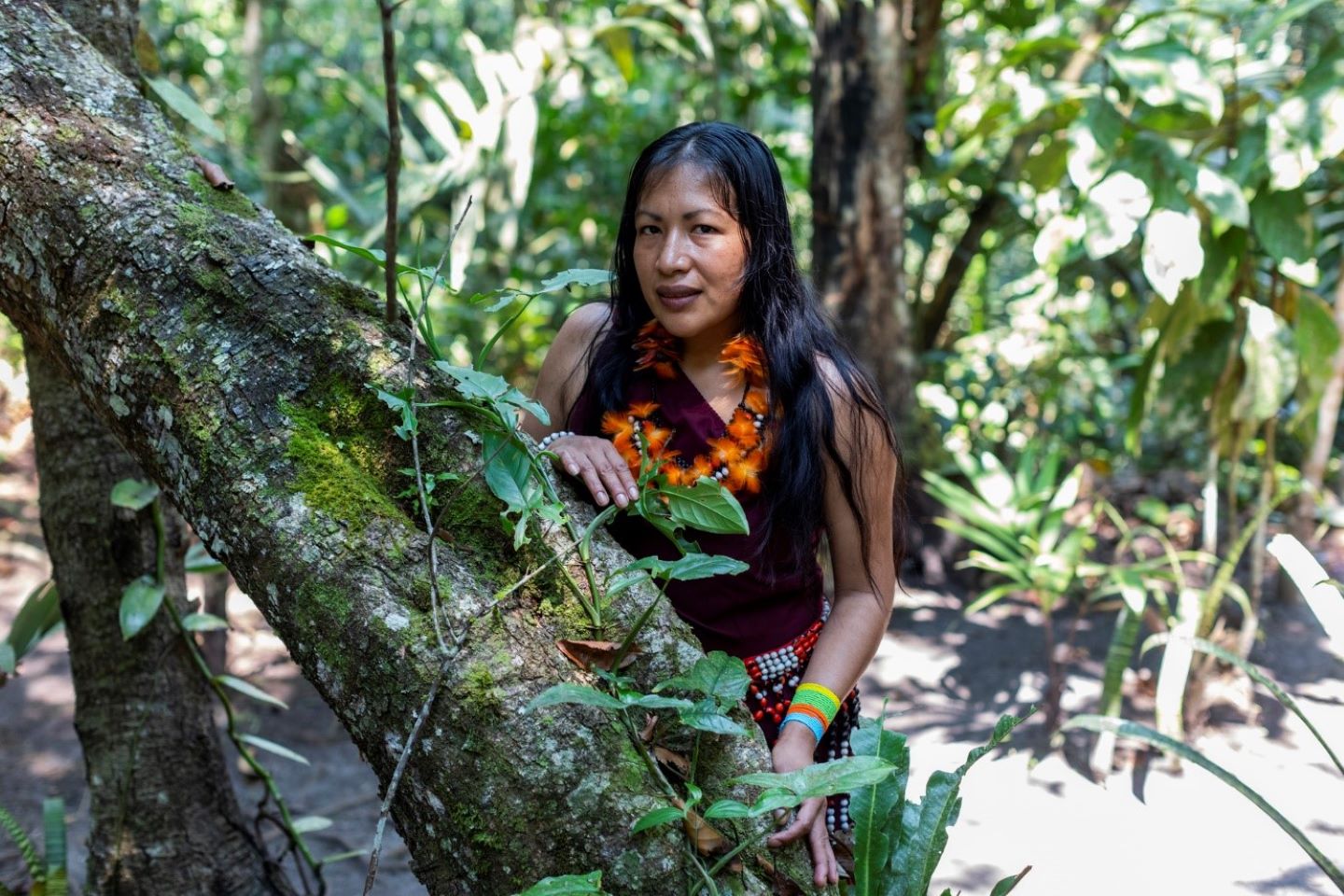The three types of biodiversity: explained
IfadAssetRequestWeb
Asset Publisher
The three types of biodiversity: explained
Estimated reading time: 4 minutes
Think of the word “biodiversity.” What comes to mind?
If you imagined a rich array of animal species, you’re not alone. But wildlife variety is only a small part of what the term encompasses – and it’s a vision that misses the critical importance of biodiversity to our planet’s food systems.
In fact, there are three main types of biodiversity: genetic, species and ecosystem. Let’s explore the role each plays in making agriculture productive, nutritious and resilient and meet some of the rural people doing their part to protect it.
Genetic diversity
Every individual plant or animal has a distinct combination of genes. The variety of genes within a given population or species is known as genetic diversity, and it’s the bedrock of modern agriculture.
Thanks to genetic diversity, generations of farmers have been able to convert wild plants into productive crops, identifying and reinforcing the traits best suited to feeding us while adapting to changing environmental conditions.
But demand for low-cost, high-yield crop varieties has resulted in a 75 per cent decrease in plant genetic diversity on farms over the past century. This makes our entire food system susceptible to disease and crop failure – and as local varieties are lost, farmers are left with few options to adapt.
Take bananas: there are more than 1,000 known varieties, yet we mostly depend on just one. Cavendish bananas are grown in vast, genetically identical monocultures, meaning pathogens like Panama disease can pose a major threat not only to the bananas, but to the livelihoods of millions of people who depend on them.
It’s clear that genetic diversity is essential to ensuring sustainable food systems. So how do we protect it?
With IFAD’s support, the seed guardians of Brazil are setting an example. These rural women are preserving hundreds of plant varieties in seed banks, including wild ancestors of today’s cultivated crops. These banks protect genetic diversity for future generations, ensuring they have the tools they need to adapt to a changing world.
Species diversity
Species diversity measures the number of different species found in a given territory – a lush tropical rainforest, for example, has much higher species diversity than a sandy desert, where a select few species can survive.
This type of biodiversity is fundamental to the functioning of many of the natural systems that agriculture depends on, such as pollination, water retention and nutrient cycling. Species-rich habitats are more adaptable and can be more productive. For example, they may be more resistant to erosion and have longer growing seasons.
But species diversity is under such severe threat that many experts believe we are facing a new mass-extinction event, the first since dinosaurs were wiped out 65 million years ago. Tens of thousands of species are threatened with extinction, including one in eight bird species, one in four mammals and over one third of reef-forming corals.
If this continues, our food systems won’t just become less productive – in some cases, they could fail altogether. Just think of the nearly three-quarters of plant species whose reproduction depends, at least in part, on threatened pollinators like bees.
But around the world, small-scale farmers are working to ensure agriculture is part of the solution. In Senegal, coastal communities are beekeeping and restoring species-rich mangrove forests with IFAD’s support, protecting species diversity and boosting local livelihoods at the same time.
Ecosystem diversity
Zooming out one step further brings us to ecosystem diversity: the number of different habitats and ecosystems in a given area. From rainforests to steppes, from deserts to mangrove swamps, our planet’s landscapes are incredibly varied.
This rich variety of habitats is the basis for strong species and genetic diversity, while providing ecosystem services that benefit the whole world. For example, peatlands filter water and absorb vast quantities of carbon from the air, preserving water quality and mitigating emissions.
As weather patterns change, ecosystem diversity is at risk. And unfortunately, as vast swathes of land are deforested to grow crops and raise livestock, agriculture too often compounds this threat.
But many indigenous farmers have protected ecosystems for generations. Around 80 per cent of the planet’s remaining biodiversity is located on Indigenous Peoples’ lands, where in many cases deforestation is lower even than national parks.
Other small-scale farmers are starting to follow their example. Just look at central Kenya, where a rural community rehabilitated 1,543 hectares of degraded forestland with IFAD’s support. The ecosystem’s capacity to capture rain and moisture was restored, boosting the river system local agriculture depends on.
They're proof that empowering and incentivizing rural communities to better manage their own natural resources is the key to protecting ecosystem diversity – and achieving food system sustainability.
Genetic, species and ecosystem biodiversity are equally critical and interconnected parts of a global system, and together they form the basis of sustainable and climate-resilient food systems.
Protecting all types of biodiversity doesn’t just ensure we can feed the planet and adapt to climate change, it ensures we can do so in a healthy way. Local biodiversity contributes to nutritious diets, ensuring a diverse range of food sources and addressing harmful micro-nutrient deficiencies.
That’s why the conservation and sustainable management of biodiversity are fundamental to IFAD’s work. Because when rural people build resilient livelihoods while protecting biodiversity, the whole world benefits.
Publication date: 11 April 2024